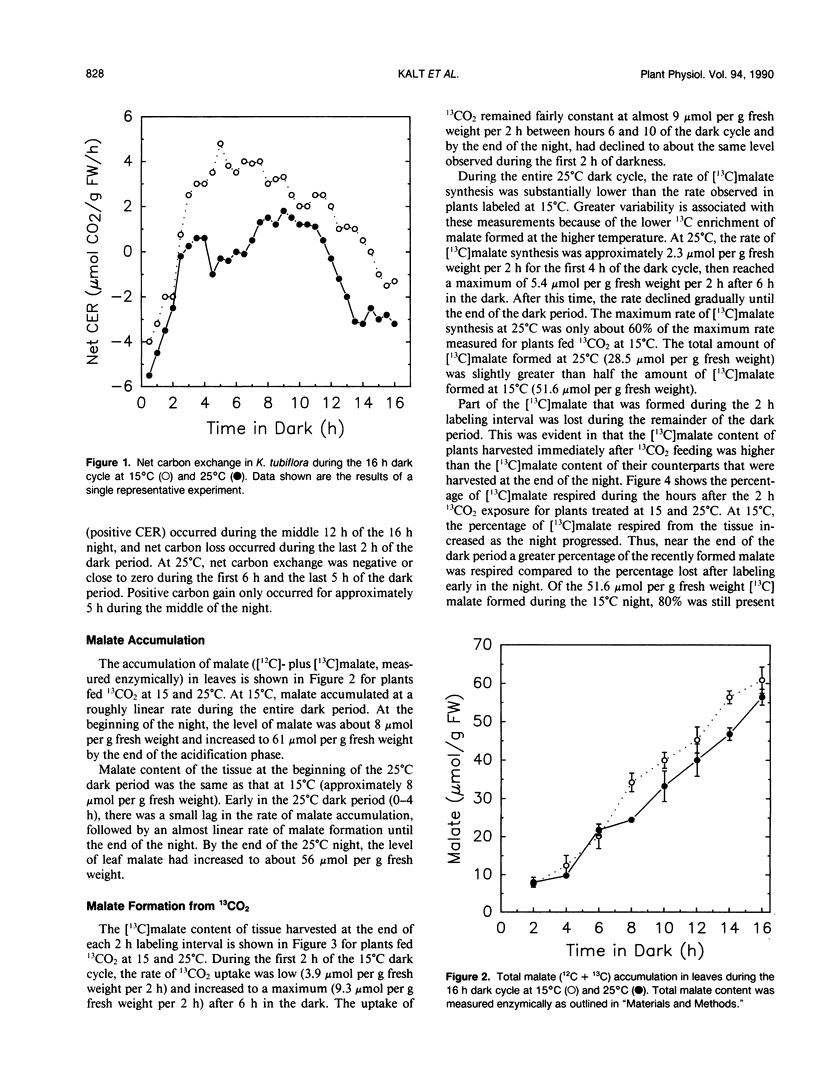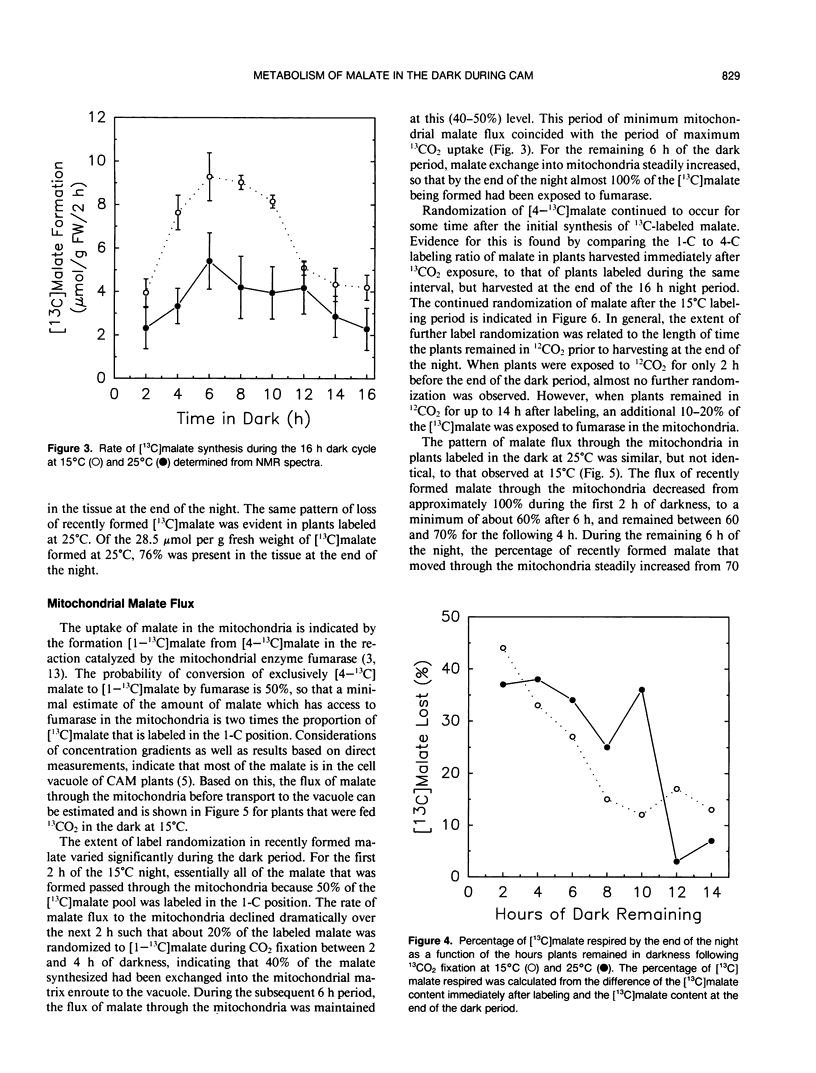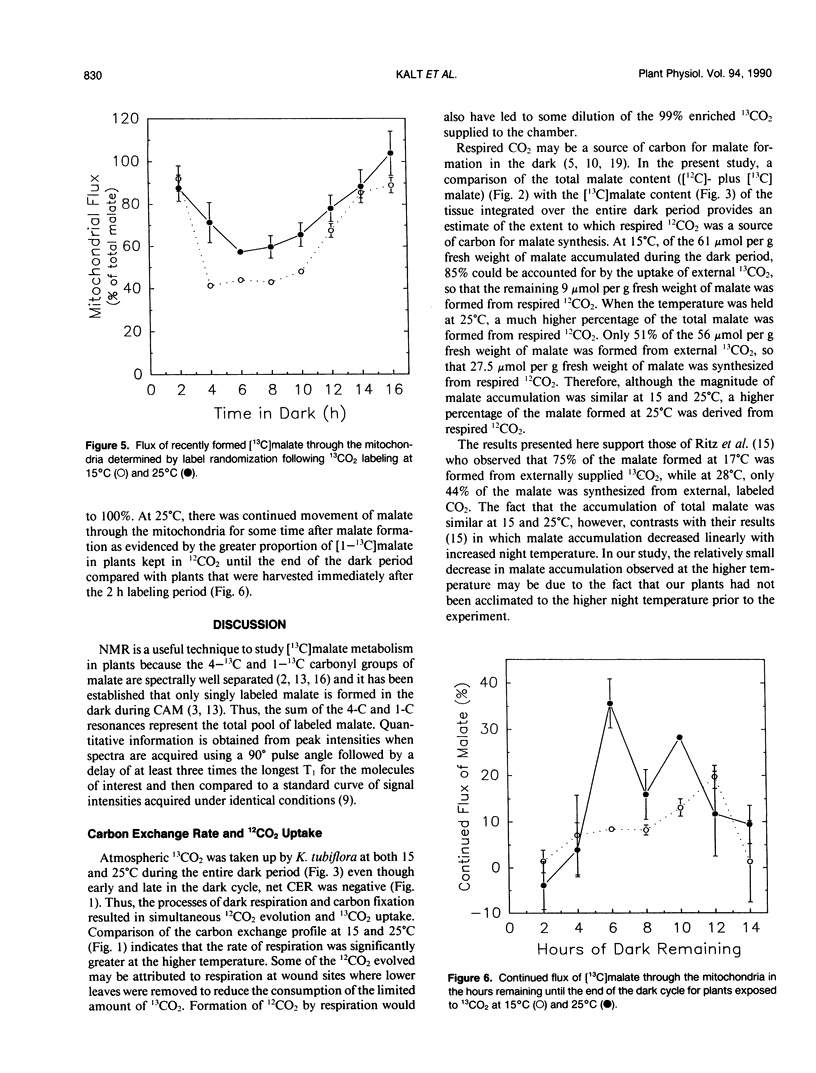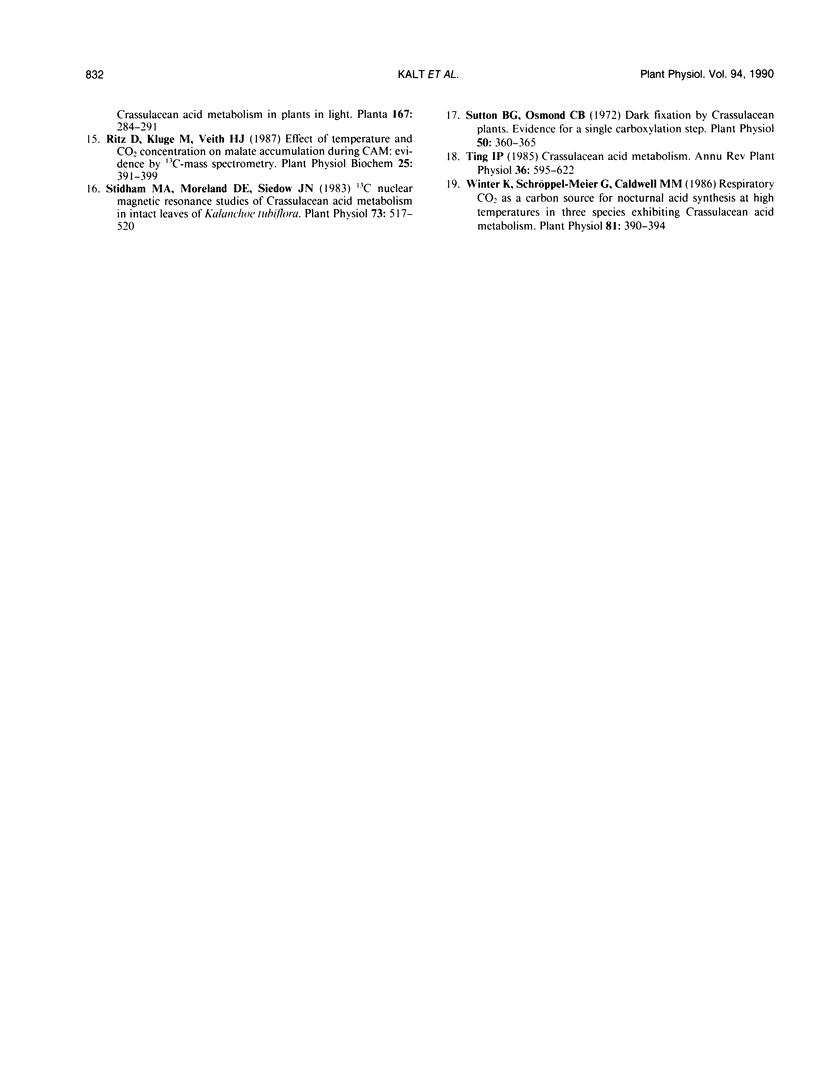Abstract
The metabolism of [13C]malate was studied in the Crassulacean plant Kalanchoë tubiflora following exposure to 13CO2 for 2 hour intervals during a 16 hour dark cycle. Nuclear magnetic resonance spectroscopy of [13C]malate extracted from labeled tissue revealed that the transient flux of malate to the mitochondria, estimated by the randomization of [4-13C]malate to [1- 13C]malate by fumarase, varied substantially during the dark period. At both 15 and 25°C, the extent of malate label randomization in the mitochondria was greatest during the early and late parts of the dark period and was least during the middle of the night, when the rate of 13CO2 uptake was highest. Randomization of labeled malate continued for many hours after malate synthesis had initially occurred. Internally respired 12CO2 also served as a source of carbon for malate formation. At 15°C, 15% of the total malate was formed from respired 12CO2, while at 25°C, 49% of the accumulated malate was derived from respired 12CO2. Some of the malate synthesized from external 13CO2 was also respired during the night. The proportion of the total [13C]malate respired during the dark period was similar at 15 and 25°C, and respiration of newly formed [13C]malate increased as the night period progressed. These data are discussed with regard to the relative fluxes of malate to the mitochondria and the vacuole during dark CO2 fixation.
Full text
PDF






Selected References
These references are in PubMed. This may not be the complete list of references from this article.
- Bradbeer J. W., Ranson S. L., Stiller M. Malate Synthesis in Crassulacean Leaves. I. The Distribution of C in Malate of Leaves Exposed to CO(2) in the Dark. Plant Physiol. 1958 Jan;33(1):66–70. doi: 10.1104/pp.33.1.66. [DOI] [PMC free article] [PubMed] [Google Scholar]
- Chang K., Roberts J. K. Observation of Cytoplasmic and Vacuolar Malate in Maize Root Tips by C-NMR Spectroscopy. Plant Physiol. 1989 Jan;89(1):197–203. doi: 10.1104/pp.89.1.197. [DOI] [PMC free article] [PubMed] [Google Scholar]
- Cockburn W., McAulay A. The pathway of carbon dioxide fixation in crassulacean plants. Plant Physiol. 1975 Jan;55(1):87–89. doi: 10.1104/pp.55.1.87. [DOI] [PMC free article] [PubMed] [Google Scholar]
- Holtum J. A., O'leary M. H., Osmond C. B. Effect of Varying CO(2) Partial Pressure on Photosynthesis and on Carbon Isotope Composition of Carbon-4 of Malate from the Crassulacean Acid Metabolism Plant Kalanchoë daigremontiana Hamet et Perr. Plant Physiol. 1983 Mar;71(3):602–609. doi: 10.1104/pp.71.3.602. [DOI] [PMC free article] [PubMed] [Google Scholar]
- Stidham M. A., Moreland D. E., Siedow J. N. C Nuclear Magnetic Resonance Studies of Crassulacean Acid Metabolism in Intact Leaves of Kalanchoë tubiflora. Plant Physiol. 1983 Oct;73(2):517–520. doi: 10.1104/pp.73.2.517. [DOI] [PMC free article] [PubMed] [Google Scholar]
- Sutton B. G., Osmond C. B. Dark Fixation of CO(2) by Crassulacean Plants: Evidence for a Single Carboxylation Step. Plant Physiol. 1972 Sep;50(3):360–365. doi: 10.1104/pp.50.3.360. [DOI] [PMC free article] [PubMed] [Google Scholar]
- Winter K., Schröppel-Meier G., Caldwell M. M. Respiratory CO(2) as Carbon Source for Nocturnal Acid Synthesis at High Temperatures in Three Species Exhibiting Crassulacean Acid Metabolism. Plant Physiol. 1986 Jun;81(2):390–394. doi: 10.1104/pp.81.2.390. [DOI] [PMC free article] [PubMed] [Google Scholar]


